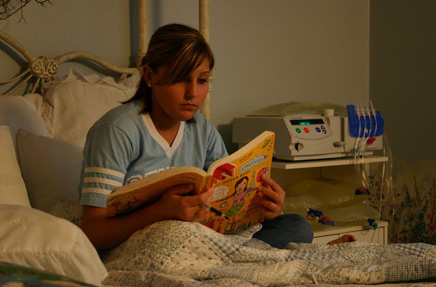APD
Home > APD
APD (Automated Peritoneal Dialysis) is usually done overnight, with a cycle machine that performs exchanges automatically, while you sleep. APD is good for people who want more freedom from dialysis during the day. Since you may not have to do exchanges during the day, APD can help you have flexibility with your daytime routine.

How does APD work?
- Dialysis takes place at night, during sleep, over 8-10 hours
- The machine measures the fluids needed for each exchange and times the delivery of this carefully
- The peritoneal cavity is filled with solution automatically
- The waste solution is drained automatically
- The last ‘fill’ of fluid is kept in the abdomen during the day
- There is a disconnection routine in the mornings and a connection routine the last thing at night
- Newer machines have programmable data cards – prescribed treatment details can be programmed onto this and data from each dialysis session can be captured. A health professional can access this remotely by modem/broadband; alternatively, the data can be accessed via a disc
- The machines are the size of a small wheeled suitcase and are easily portable
- Fluid exchanges not usually needed during the day
Apart from the machine there will still be practical issues of storage and disposal of used supplies
